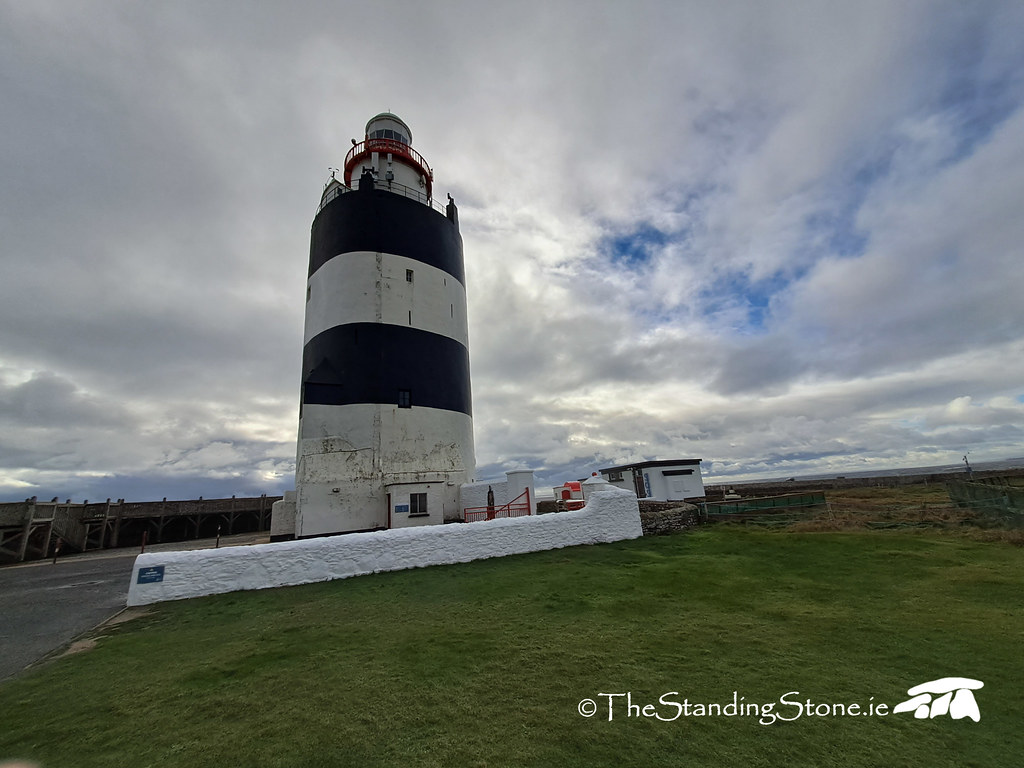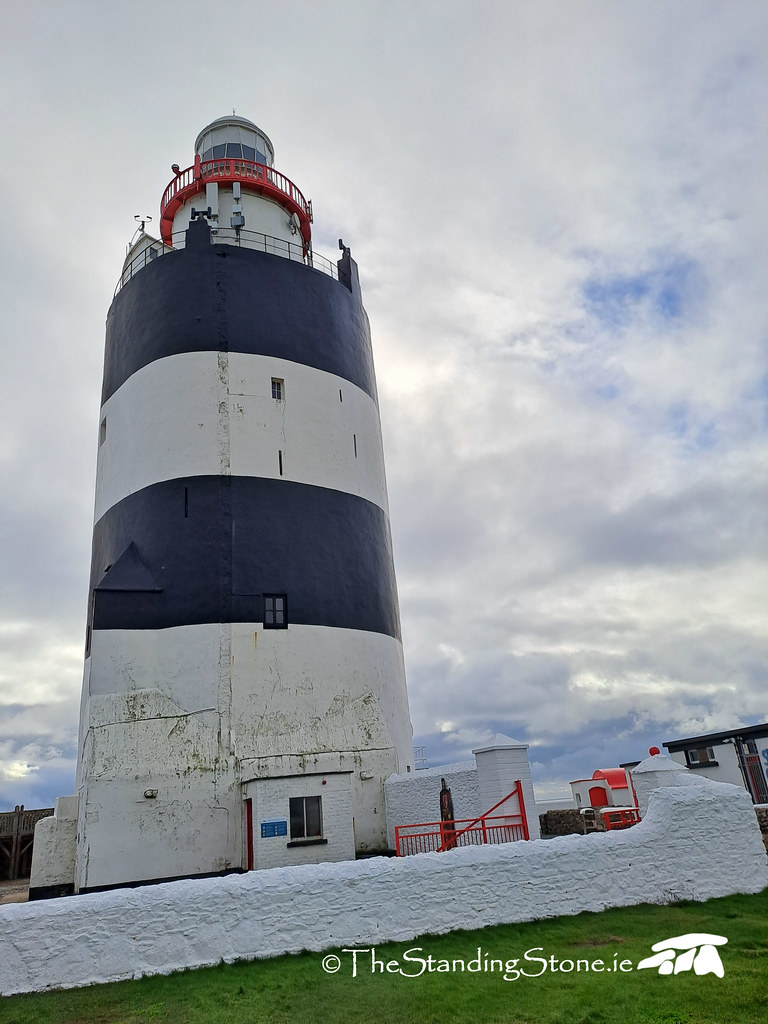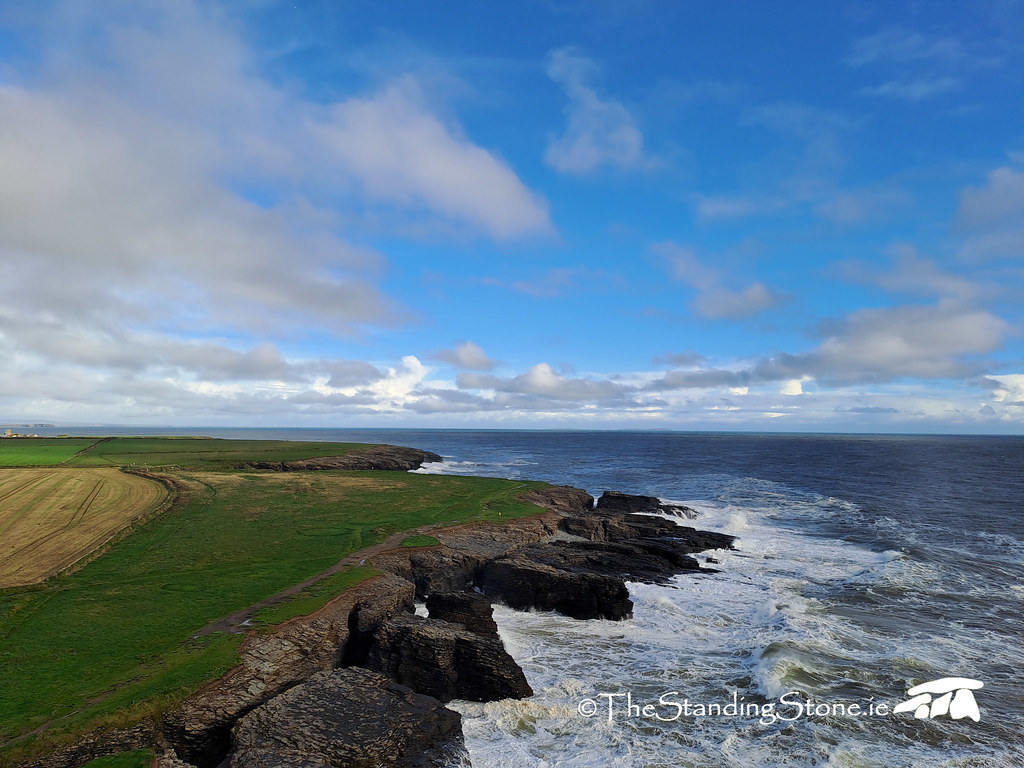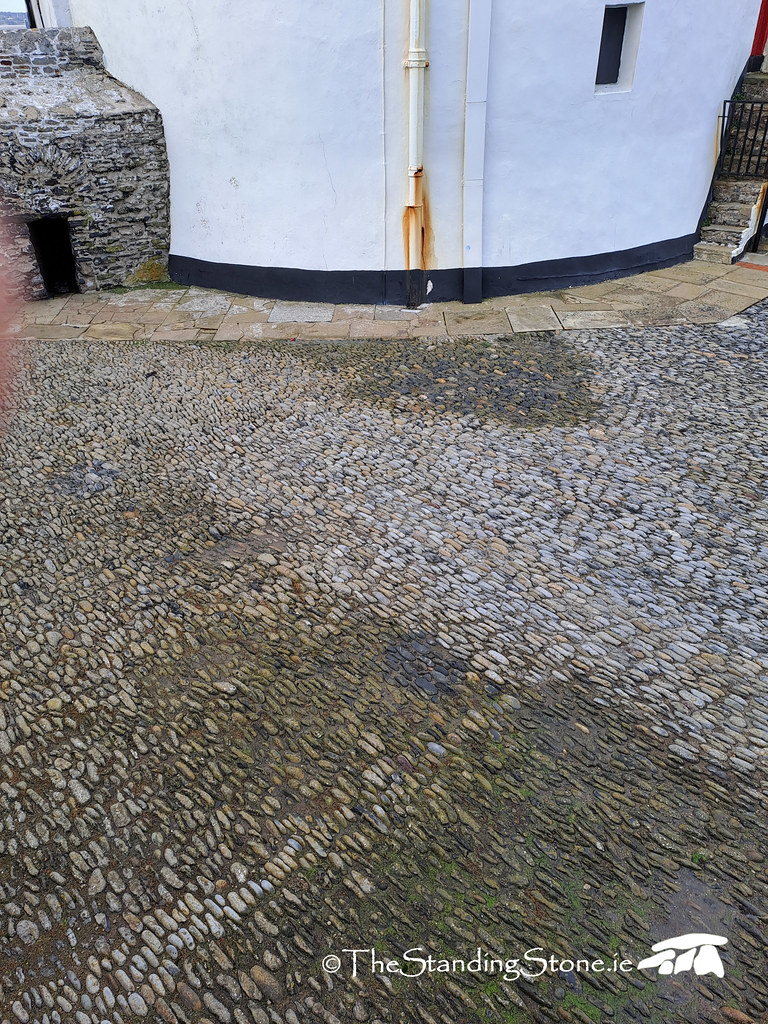Location – On the very south tip of Hook Head, at the very end of the R734.
OS: X 73364 97383
Longitude: -6.9294079
Latitude: 52.123795
Description and History – Hook Lighthouse is one those iconic Irish sites and it is not hard to see why. Perched on the very edge of the Hook Head looking out to sea, it is both dramatic and breath-taking. It is accessible by guided tour only, although the exterior can be viewed for free. However, I would recommend taking the guided tour and see the inside, and learning more about it. There is also a nice café on site which we thoroughly enjoyed. It’s a great family day out.
As to the lighthouse itself, there has been some form of lighthouse here since the 5th century when the monks of St. Dubhán’s Church nearby would keep a beacon continually lit to help guide nearby ships. The present lighthouse dates to the 13th century and was built under the orders of William Marshall and with the now Augustinian monks of St. Dubhán’s still looking after the light. William had survived a shipwreck off the coast of Wexford which likely influenced his decision to improve the beacon. The suggested dates given to the tower’s construction are c.1210-1230. Twelve acres of land were put aside for the monks who looked after the lighthouse. The construction dates of the lighthouse bring up an interesting question – is Hook Lighthouse the oldest continually used lighthouse in the world? Hook Lighthouse would argue that yes, they are. We took an excellent tour of the lighthouse and this claim was repeatedly made. However, the Tower of Hercules in Spain also makes that claim. The Tower of Hercules is a Roman lighthouse and was originally constructed in 2nd century AD. However, it was largely rebuilt in the 18th century while preserving the original Roman core. The tower was also heightened at this time by some 21 metres. I cannot remember the exact reason from the tour as to why they considered Hook to be older, but I imagine it was because of this rebuilding and reconstruction. While parts of the Tower of Hercules is from the 2nd century, much is 18th century in date while Hook is largely unaltered. Therefore, an argument could be made that Hook is the oldest still operating lighthouse in the world. You can make your own minds up on this, it really depends on your perspective.
While the lighthouse is described as continually used since the 12th century, there has been one known break in usage. In the Down Survey of Hook parish it is described as a former lighthouse and is known to have been out of use since at least 1641. However, this interruption was short-lived and it was reused from 1671 when Robert Readinge upgraded the light to coal in a brazier, encased in glass. It was later owned by Henry Loftus of Loftus Hall in 1688. In 1791, the lamp was upgraded again to one of 12 lamps fuelled by whale oil. Finally, in 1867, the lighthouse was handed over to the Commissioners of Irish Lights who still operate it. They changed the fuel to gas, and later paraffin. In 1972 the lighthouse went electric, and became fully automated in 1996.
The tower is modelled after a Norman castle keep, and later medieval drawings show that it was originally crenelated. It stands, today, to a height of 24.7m and it 12.3m in diameter with the walls a staggering 3.7m thick at the base, narrowing to 2.7m at the top. There are three groin-vaulted floors internally, with an external base batter, and mural stairs throughout. The lower floor is still black from centuries of coal storage. There is evidence of several garderobes, but these have been altered and blocked up in places.
Hook Lighthouse is well worth the journey and taking the time to explore. The tour is fantastic, and if you combine it with visiting some of the other historical sites nearby it makes for a great day out.
Difficulty – Good parking and facilities on site. It can be very windy here to wrap up, especially in the winter months.
Date of Visit – 3rd November, 2022.
For more sites in Co. Wexford, click here.















